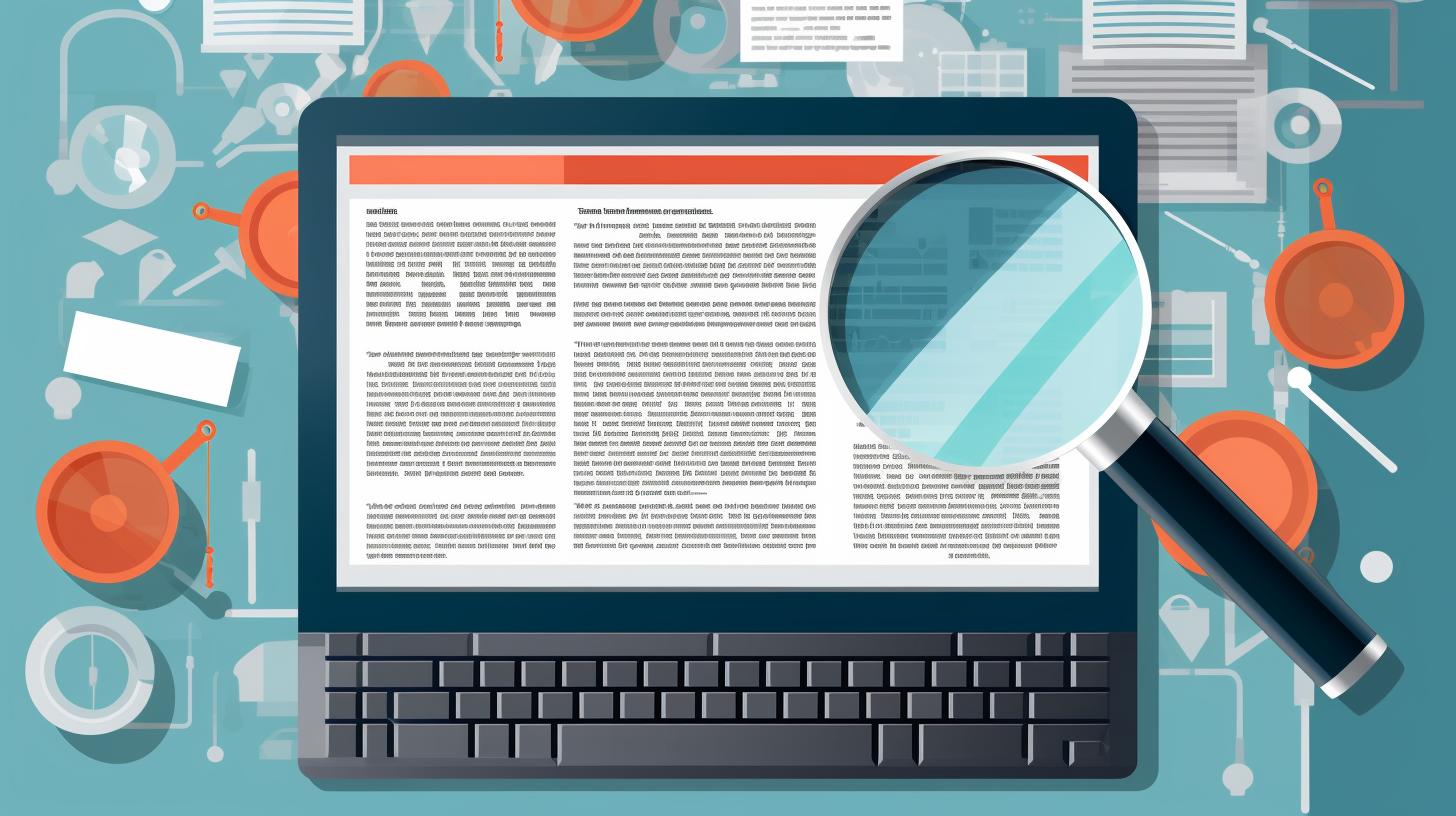AI-generated content has been on the rise in recent years, with the development of advanced natural language processing (NLP) algorithms and machine learning models. From chatbots and virtual assistants to news articles and social media posts, AI-generated content is becoming more prevalent in various fields of technology. However, the authenticity and credibility of such content are often in question. As the owner of Article Fiesta, Ash, we understand the importance of creating high-quality and authentic content. Our AI-generated content is superior in terms of readability and authenticity. We offer direct blog posting, scheduled automatic posting, and brand voice customization. Our built-in SEO features handle internal links, meta descriptions, and headings for maximum impact. Additionally, our royalty-free images, videos, and graphics enhance articles. We encourage readers to check out our tool for their content generation needs.
In this ultimate guide, we will explore the challenges of detecting AI-generated content and provide tips and tools for evaluating its authenticity. We will also discuss the ethics and implications of AI-generated content and provide strategies for avoiding it altogether.

The Challenges of Detecting AI-Generated Content
One of the main challenges of detecting AI-generated content is the limitations of traditional plagiarism checkers and grammar tools. AI models can create seemingly original content that may deceive readers and search engines. This is especially true in cases where the AI model has been trained on a large corpus of text and can generate content that is indistinguishable from human-written text.
Another challenge is the potential consequences of publishing or consuming AI-generated content. For example, AI-generated news articles could mislead readers, potentially causing significant harm. Similarly, AI-generated reviews or testimonials could deceive consumers and harm the reputation of businesses.
Detecting AI-Generated Content: Tips and Tools
- AI-generated content can deceive readers and search engines, making it important to detect it.
- Traditional plagiarism checkers and grammar tools have limitations in detecting AI-generated content.
- Techniques for detecting and evaluating the authenticity of AI-generated content include identifying potential AI-generated content, using popular AI detection tools, fact-checking and verifying sources, and filtering out AI-generated content.

Techniques for Detecting AI-Generated Content
There are several techniques for identifying potential AI-generated content. One way is to look for repetition of words and phrases, as AI models may generate content that is overly repetitive due to their programming. Another technique is to examine the overall structure and coherence of the content. AI-generated content may lack the depth and nuance of human-written content, or it may be overly formulaic.
There are also several popular AI detection tools available, such as Copyleaks. Copyleaks offers the only AI detector that supports over 15 languages, including English, Spanish, French, Portuguese, German, Italian, Russian, Polish, Romanian, Dutch, and more. The AI Content Detector is designed to detect human-generated text and prevent false accusations. It incorporates user feedback, extensive testing, and a low risk of misidentifying human-written content as AI-generated.
Another popular tool is the GPT-2 Detector and GPT-3 Detector. These tools can identify text generated by OpenAI’s GPT models, including GPT-2 and GPT-3. They use advanced algorithms to analyze patterns and context to identify AI-generated text accurately.
It is essential to use multiple methods and sources to verify the authenticity of content. While AI detection tools can be helpful, they are not foolproof, and personal judgment is still necessary.
How to Evaluate the Authenticity of AI-Generated Content
Evaluating the credibility, relevance, and accuracy of AI-generated content is crucial. It is essential to fact-check and verify sources to ensure the information presented is accurate and trustworthy. One way to do this is to use multiple sources and compare the information presented to ensure its consistency.
It is also important to evaluate the context in which the content was generated. For example, AI-generated content used in a scientific or medical setting may require more scrutiny than content used for entertainment purposes. Evaluating the authenticity of AI-generated content requires a nuanced understanding of the context in which it is used.
| Criteria for Evaluation | Description |
|---|---|
| Accuracy | The content should be factually correct and free from errors. Verify sources and use multiple sources to ensure consistency. |
| Credibility | The content should be trustworthy and reliable. Check the author’s credentials and evaluate the context in which the content was generated. |
| Relevance | The content should be relevant to the topic and audience. Evaluate the context in which the content was generated and the intended purpose. |
| Originality | The content should be original and not plagiarized. Use plagiarism checkers and examine the overall structure and coherence of the content. |
| Bias | The content should be free from bias and represent diverse perspectives. Evaluate the context in which the content was generated and the potential biases of AI models. |
Case Study: The Risks of AI-Generated Content
As a content marketer, Emma had been struggling to keep up with demand for fresh, engaging content. She decided to try using an AI-generated content tool to help her save time and meet deadlines. However, after publishing a few blogs, she noticed a drop in engagement and traffic to her website.
Upon further investigation, Emma discovered that the AI-generated content had been pulling from unreliable sources and repeating information that was inaccurate or outdated. Her readers had noticed the lack of authenticity and stopped trusting her brand. Emma had to work hard to restore her reputation and regain her audience’s trust.
This experience taught Emma the importance of verifying the authenticity of the content she published, regardless of the source. She now uses a combination of tools and methods to detect AI-generated content and ensure that her content is trustworthy and high-quality.

The Ethics and Implications of AI-Generated Content
As AI-generated content becomes more prevalent, there are ethical concerns and potential biases involved in AI detection. For example, some AI detection tools may be biased towards certain types of content or languages, potentially leading to false positives or negatives.
However, there are also potential benefits of AI detection. For example, it can help prevent the spread of misinformation and improve the overall quality of content available online. A balanced perspective on the pros and cons of AI-generated content detection is necessary to ensure that detection tools are used ethically and responsibly.
How to Avoid AI-Generated Content
There are several tips and strategies for avoiding AI-generated content. One way is to use browser extensions that filter out AI-generated content. For example, the “Botcheck.me” extension can detect and flag AI-generated content on web pages.
It is also essential to educate oneself and others on the risks and challenges of AI-generated content. By understanding the limitations of AI and the potential risks associated with its use, individuals can make more informed decisions about the content they consume and share.

Additional Resources and References
For further reading and tools related to AI-generated content detection, we recommend the following links:
- /ai-tool-to-generate-content/
- /ai-generate-content/
- /ai-tool-to-write-content/
- /auto-writing-ai/
- /best-free-ai-content-generator/
- /best-ai-content-generator/
- /ai-powered-content-writing/
- /ai-for-content-writing/
- /how-to-use-an-ai-content-writer-to-get-free-traffic-from-google/
- /ai-to-write-content/
Conclusion
In conclusion, detecting AI-generated content is becoming increasingly important as AI models become more sophisticated. By using the techniques and tools outlined in this guide, individuals can evaluate the authenticity of content and make more informed decisions about what they consume and share.
As the owner of Article Fiesta, Ash, we encourage readers to check out our tool for their content generation needs. Our AI-generated content is high-quality and readable, with direct blog posting, scheduled automatic posting, and brand voice customisation. Built-in SEO features handle internal links, meta descriptions, and headings for maximum impact. Additionally, our royalty-free images, videos, and graphics enhance articles. However, we also emphasize the importance of creating authentic and trustworthy content and using AI-generated content responsibly.
Questions & Answers
What is AI generated content?
AI generated content is text produced by artificial intelligence algorithms.
How can I detect AI generated content?
Look for inconsistencies in language and grammar, and check for unnatural phrasing.
Who uses AI generated content?
Companies often use AI generated content to save time and resources.
What are the benefits of using AI generated content?
AI generated content can be produced quickly and efficiently, and can be customized for specific audiences.
How can I be sure that content is not AI generated?
Look for signs of human touch, such as personal anecdotes or unique perspectives.
What if AI generated content is better than human generated content?
While AI generated content may be efficient, it lacks the creativity and nuance of human writing.
